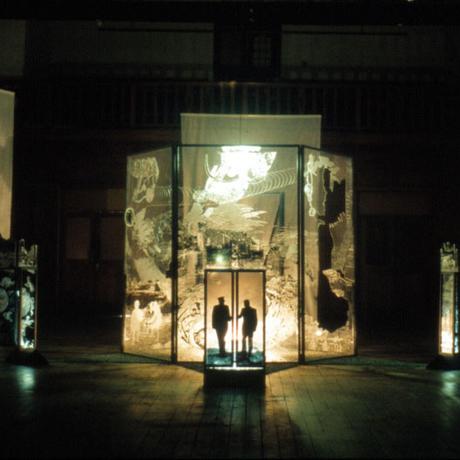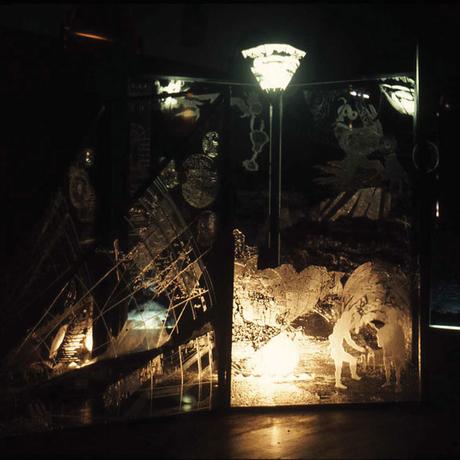ARTIST INTERVIEW : INSIGHTS FROM KATHERINE BULL
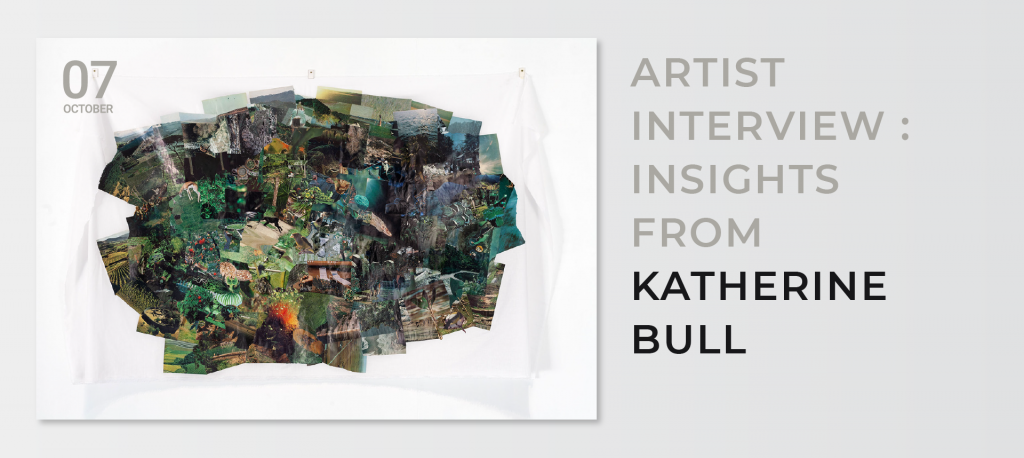

Katherine Bull discusses the journey of her artistic processes and how her interest in different creative avenues has grown over the years, from printmaking, installation, collaging to the introduction of a performative element into her body of work. Bull’s work is complex and multi-disciplined as she plays with a variety of mediums to push traditional art making boundaries. Although her body of work may initially appear to be surprisingly diverse, with closer examination it draws from a multitude of common threads. Katherine Bull, art maker and mentor, provides us with an intimate insight into the conceptual threads that bind her artistic expressions together and she takes us through the unfolding of her distinctive processes.
CAN YOU TELL US HOW YOUR ARTISTIC PROCESSES HAVE DEVELOPED OVER THE YEARS?
My Undergraduate Degree (Michaelis School of Fine Art) was in printmaking and that is where my interest in researching and questioning how information systems operate started. During my Masters research, in the late 90’s, I submitted an installation work and thesis investigating the politics of colonial spatial power within early print representations of the Cape. I critically explored their relationship to the archive as a culturally charged metaphor for the complex relationship between the geographical and ideological spaces of the centre and periphery, the familiar and strange, and the physical and the virtual.
Positioning the Cape: A Spatial Engraving of a Shifting Frontier (1997-8), mixed media installation (hand engraved acrylic, metal, wood, florescent & Tungsten lighting)
For me, it was never enough to just work within the tradition of printmaking. I enjoy challenging the boundaries of perception and questioning the history and systems of image making and information production. It is also about the context from which you come as an artist. When I was studying, many artists were working in an interdisciplinary way as a means of challenging some of the culturally contested historical spaces and archives (eg. Scurvy & Fault Lines exhibitions, Castle of Good Hope, Cape Town 1995-1996). I ended up using a traditional print process of engraving but working onto clear Perspex from collages combining past and present images of the Cape. I constructed a large-scale installation from the Perspex panels and used integrated lighting to refract and project shadows of the engraved images as a means to further disrupt the colonial archive.
In 2003 I started working in the digital space. My interest in information systems and archiving continued, but I began reflecting on how many of the archives were being digitised. This led me to think about how I would construct my own personal archive from scratch rather than manipulating appropriated imagery. I started drawing on the computer with a mouse in Photoshop and played on the traditional artistic practice of drawing from life together with the technical process of layering of colour in the construction of a colour printed image. I invited family and friends to sit for me so that I could draw them live on the computer – drawing each colour layer (cyan, magenta, yellow & key) separately on the computer and then printing each colour layer over each other to construct a single portrait. After a few years, I became skilled at the digital drawing with the mouse and people presumed that there was photography involved rather than a being drawn from life. These responses led me to performance in an attempt to better communicate to a viewer what I was finding interesting about my process.
HOW DID YOU START INCORPORATING PERFORMANCE INTO YOUR ART?


Data Series (2004)
Performance was a reaction to observing that my process was not present enough in the work. So for my solo exhibition (data: new print works by Katherine Bull. 2004. Joao Ferreira Gallery. Cape Town), I started drawing live in the space. I designed a set of furniture to create a mobile studio set-up to draw from life and print the portraits in the gallery space. For about ten years I travelled doing different iterations of the digital drawing in different contexts and places. I would mirror the digital drawing process on another computer monitor or projector so that the portrait could be watched emerging in real-time. I found the three-way interaction between myself, the sitter and the technology as a mediator an interesting experience. Thereby giving the technology an actual presence. The sitter would say that they could ‘feel’ me looking at them. I enjoy this sensory connection – using the technology in a convoluted way to make the sense of looking closer to a sense of touch. My interest in technology became more about narrowing the gap between a sensory experience of the world and digital devices as prosthetic extensions. So my performance as practice grew organically as a way to communicate and connect with the gallery visitor through sharing my process of making. More recently my performances have shifted towards an interest in a shared making with the audience.
A turning point in my practice came in 2010 when I participated in a group show curated by Christian Nerf & Spunk Siepel at Serialworks, a project space in Cape Town. For the performance data capture_counterpane, I decided to perform in bed. I set up a television showing an edited loop of old film footage that my great-grandmother had taken of a procession of soldiers practicing a funerary march near Simon’s Town. From my position in bed, I used watercolour to capture this repetitive moving image in a series of sketches.

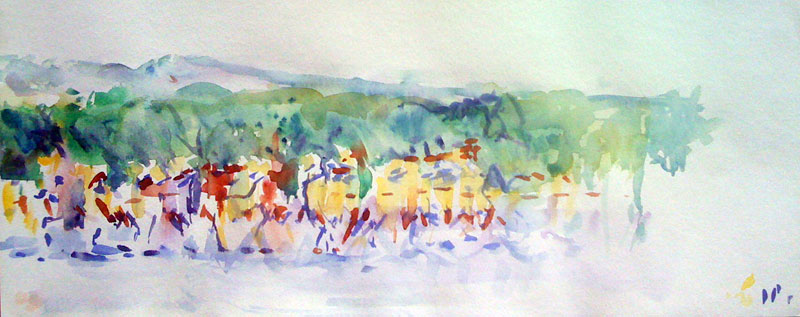
Drawing performance as part of / + = X,
a group exhibition curated by Christian Nerf & Spunk Siepel | Serialworks
Cape Town, South Africa, March 2010
So for me this was the start of painting from a moving digital image and has taken different directions over the years – whether it be my Skype portraits, Google Search paintings or working from live webcams. I am interested in the moving digital image and how it reflects the contemporary landscape in which we live – as so much of our lives are spent in this fleeting virtual space.

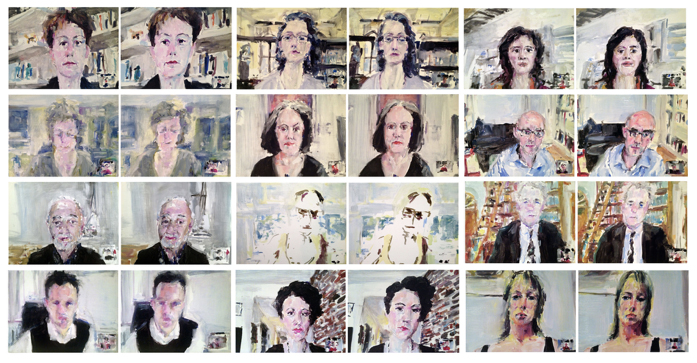
Data capture_ DOUBLE TROUBLED (2013)
oil on board
The double portrait sketches over a live Skype connection for data capture_DOUBLE TROUBLED were generated ambidextrously to create the two parallel portraits. I am interested in how the online platform enables an intimate ‘live’ connection with another person, yet there is a distance in space and time. In using the Skype interface as a space of silent communion, I draw attention to how we communicate through more than speech. I am also interested in the ‘painterly’ quality of the varying resolutions of the online connection.
In preparation for the Google search series of paintings, the process starts with an image or a word search in Google. I then upload the first image-match back into Google as a Reverse Image Search and then download the next closest match and upload that image back into the search engine and so on. So the image matching algorithms become a way of navigating through the online collective database randomly. In developing the work Google_Portrait Painting (2016) when I typed “portrait painting” into the Google search, I found it interesting how the search transitioned from male to female to animal in the portraits. I then animate the search results into a rapid animation at 24 frames per second and paint in response to a projection of the animation. The speed at which the video plays can be mesmerising. I find it quite meditative as I become entirely absorbed by the light, the colour and the speed of the rapid projected images to create a work.
HOW IMPORTANT IS MEDITATION TO YOUR PRACTICE AS AN ARTIST?
I have found the practice of meditation over the last twelve years supportive in helping me towards an internal balance as well as managing my anxiety. Meditation as a drawing process has become vital in the development of my performance work. My Drawing Breath meditation started in the studio as an exercise to help me become more present by focusing on my breath. I have always juggled many things so I often use it to shift into my studio practice.
During the lockdown, I was very busy with online teaching and suffered the loss of my grandmother Esmé Bull (1922 – 2020) from COVID. As a result, I gravitated towards my more ritual practices – the Drawing Breath works and the collages as a means to cope and process my loss. My personal loss became connected to a shared global pandemic experience and it felt like an appropriate time to work more publicly with my meditative drawing processes. This is how I came to share my Drawing Breath series at first daily on Instagram during the lockdown and then as performance in my most recent exhibition as part of the Cubicle series at Everard Read Cape Town ( 3-16 August).

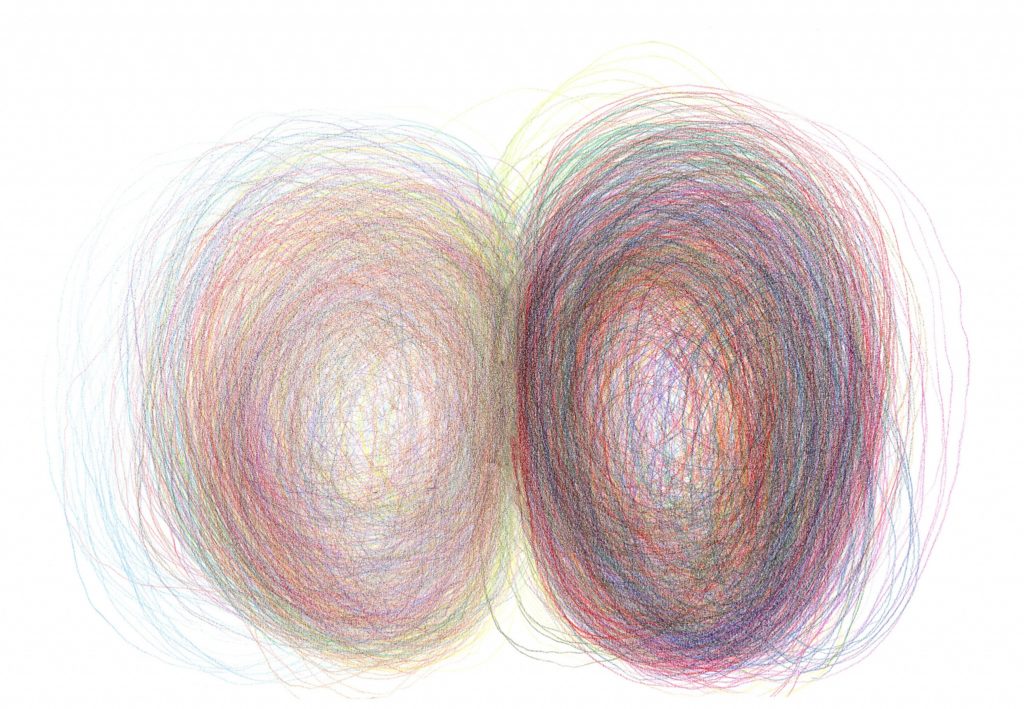
Drawing Breath (2 – 31 May, 2020),
Water-soluble wax crayon on paper
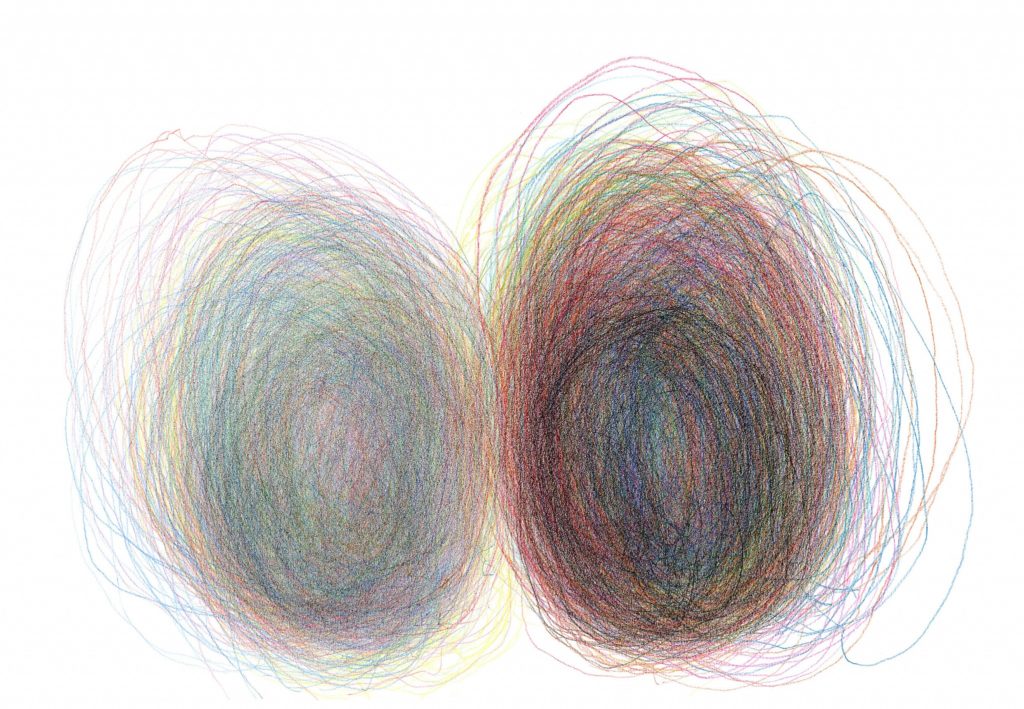
Drawing Breath (27 March – 1 May, 2020)
Water-soluble wax crayon on paper
For the Drawing Breath performance, I visited the gallery daily and performed drawing breath onto the wall of the exhibition space as a commemorative, meditative and restorative act. I invited visitors & viewers to join me in drawing breath either in person or virtually as I broadcasted the drawing action live each day via Instagram TV. This also resonates with my interest in using social media technologies to create a shared intimate experience. And it felt in alignment with an overall goal for me which is to have less separation between all the different things that I do: teaching, meditation and making. The meditation as a practice of connectivity (within & without) helps me to bring everything into one space.
My series of small collages (#wheredoibegin) are also created through a meditative process. While I am meditating on a certain feeling or aspect within myself, I select pages without looking from magazines and old books. Then I have to make something with what I have chosen.

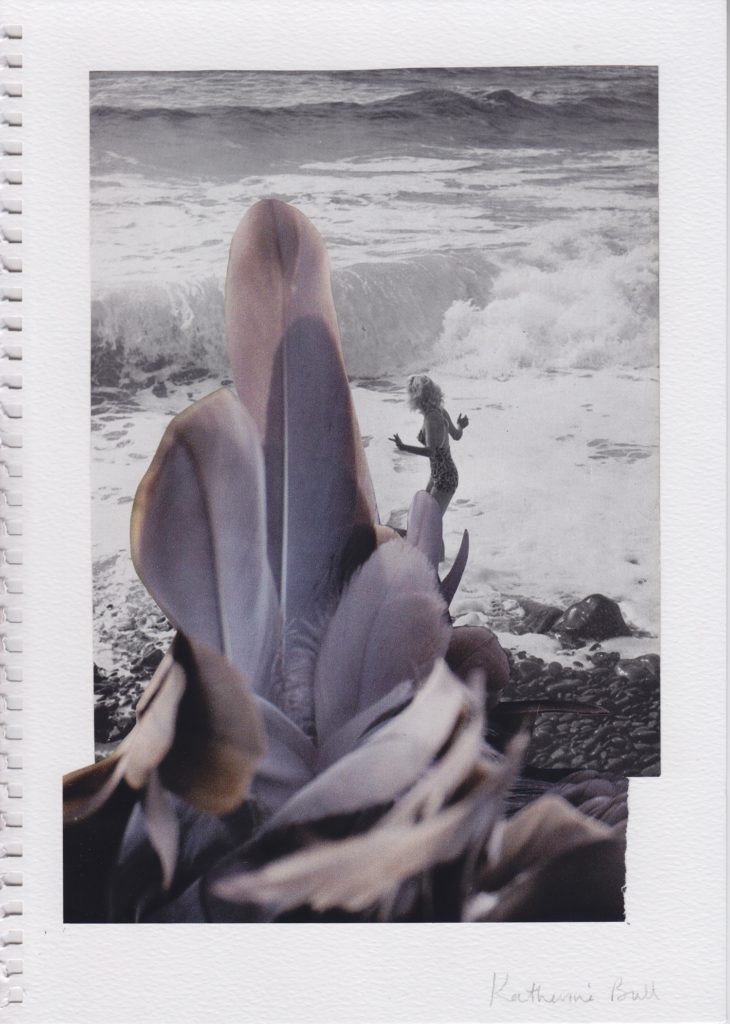
Wheredoibegin_19.10.14 (2019)
collage
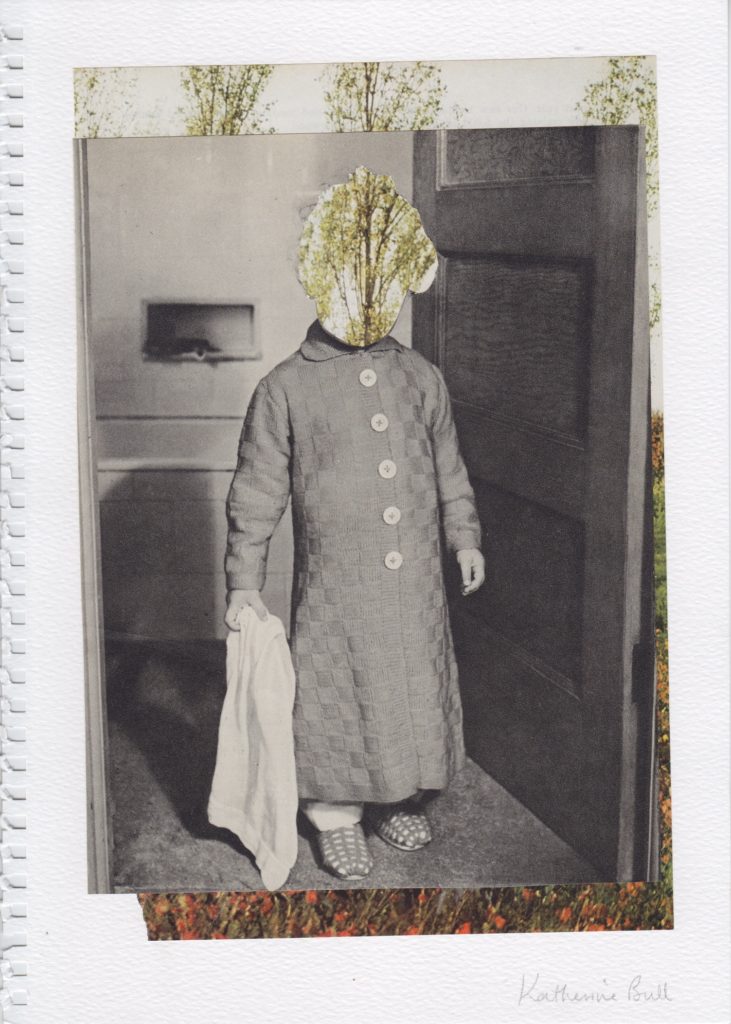
Wheredoibegin_05.10.19 (2019)
collage
I have been doing collage work for a long time in my studio as preparatory work but I only recently started to exhibit them. My love of collage goes back much further; my first memory of collaging is from when I was a child and I used my grandmother’s gardening magazines (she loved to garden) to construct my own garden. I had been wanting to make a bigger collage for a while now so I decided to create a large scale garden collage in memory of my close relationship with my grandmother who planted the seeds for my love of art, history and the earth. The works title Green Lung (my grandmother’s garden) also references my environmental concerns that links back to my last solo exhibition Afterimage ( Smith Studio Gallery March-April 2019).

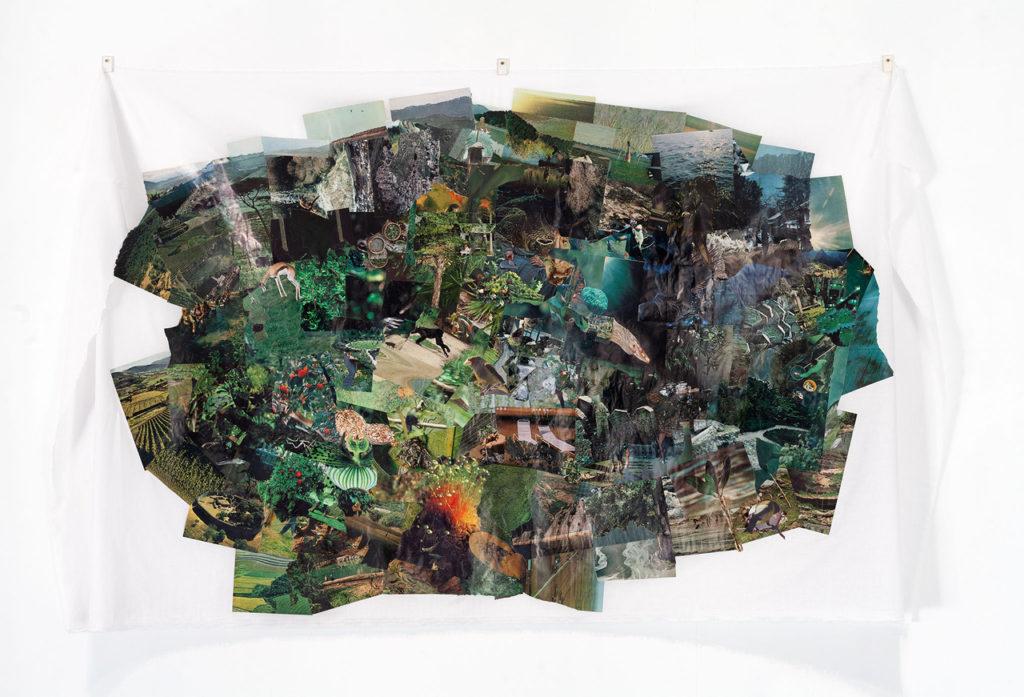
Green Lung, My grandmother’s garden (2020)
collage
Photo by Mia Thom
CAN YOU TELL US MORE ABOUT SOME OF THE OTHER ARTWORKS ON YOUR RECENT SHOW DRAWING BREATH?


Dead Dove (The Visitor) (2020)
ink on cotton
Another thread in some of the works on Drawing Breath that also links back to my Afterimage exhibition is my reflection on my animal-human relationship. For example, the work Dead Dove (the visitor) has an interesting story behind it because quite soon after my grandmother passed away, I woke up to a dead dove in my courtyard and it felt to me like I was being given another opportunity to confront the physical aspect of death. A reflection on the contagious aspect of COVID which has left many families isolated from the experience of being with their loved ones as they pass on. The wind was blowing at the time, animating the feathers of this dead dove and that grabbed me and led to this work. I worked from a short video that I had filmed and looped. The painting captures from the movement and projected light a sense of the body being there and not there. I work on percale cotton sheeting that is not primed and the paint becomes difficult to control so it bleeds. I like to work with that tension between precision and lack of control. There is almost a sense of the spirit leaving the body with this work.
For the show Drawing Breath, I appreciated the idea that there were different ways of experiencing the show – one could be in the physical space or experience it virtually via the live Instagram TV broadcast. It was interesting to have both happening at once. The intimacy of a show is important to me and creating a space of connecting through an embodied witnessing and shared making.
For additional information and queries, please contact 99 Loop Gallery here
If you would like to see more of Katherine Bull’s art, follow her on Instagram here or visit her website here


